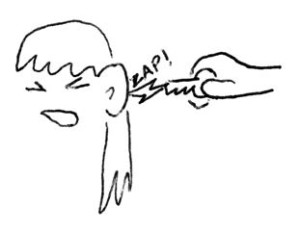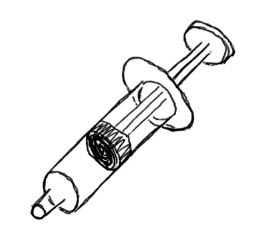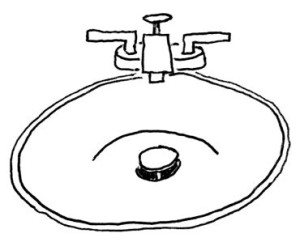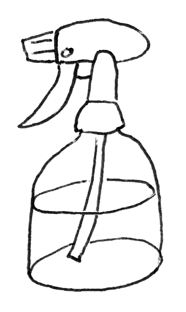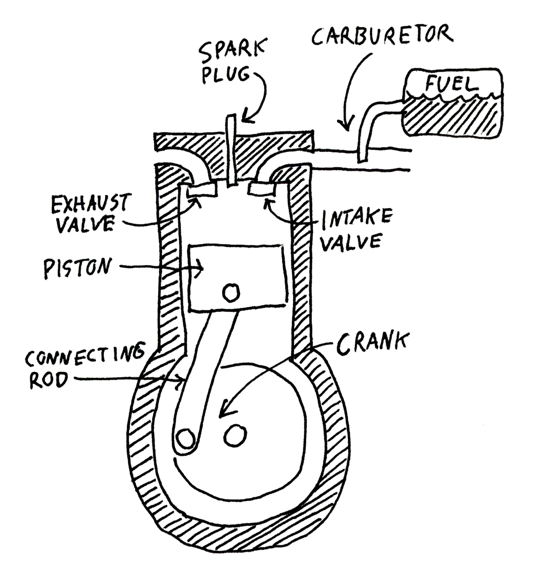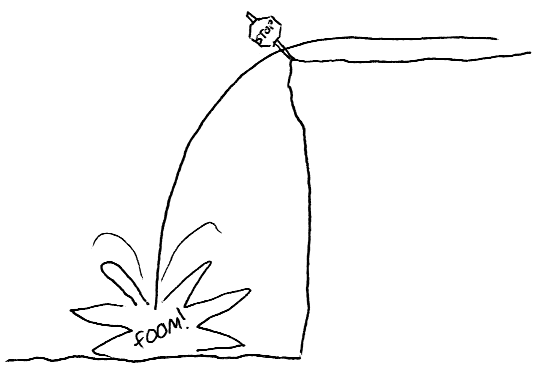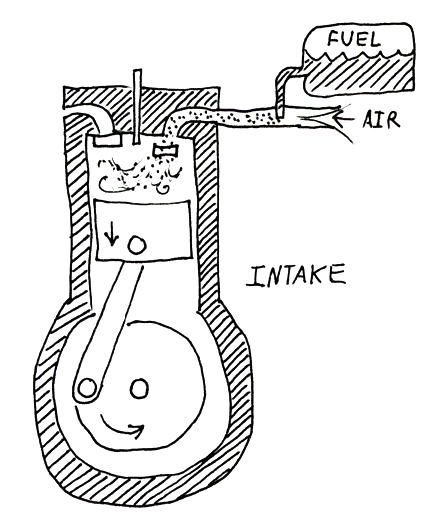This post was adapted from a section I had to cut from an early draft of a book.
Today I’m going to explain how a gasoline engine works, using things you already understand: a tricycle wheel, a spray bottle, a syringe, and a bathroom sink.
Remember when you were little and you had a tricycle?
After you’d pedaled up and down the block a hundred times, you probably experimented with things like pedaling with just one foot. You discovered that if you pushed down hard enough, the momentum of the bike kept the wheel going and brought the pedal back up again.
Remember shuffling your shoes on the carpet and then touching your sister on the ear? (Don’t try to deny it, I know you did this.) Of course, zapping your sister would hurt you too, unless you figured out that you could hold something metal in your hand, and that would conduct the electricity.
Another fun toy was the syringe.
You could fill the bathroom sink full of water, stick the syringe in, pull the plunger back and it would suck up water. Then you could press the plunger forward and shoot water at your sister.
And there was always the squirt bottle. Useful for squirting sisters or just misting yourself when it was hot.
What do these things have to do with a gasoline engine? Believe it or not, you already understand all the basic parts of an engine. Here’s a really simplified engine diagram.
Let’s start with the piston. This is a lot like the plunger in the syringe. It slides up and down inside a cylinder. When you pull the piston down, it sucks in air. When you push the piston up, it pushes the air out. The crank is like the pedal on your old tricycle and the connecting rod is like your leg. When you turn the wheel, the crank pushes the cylinder up and down. The valves you see at the top of the cylinder work just like the drain plug in your bathroom sink. They open and close to let air in or out of the cylinder.
Now let’s look at the fuel. You’d think from Hollywood movies that a tank of gasoline is a bomb, just waiting to go off. After all, any time a car goes off a cliff in a movie, as soon as it hits the bottom, it explodes in a big fireball.
Sadly, cars rarely explode in real life. Gasoline is flammable, but in order for it to explode, it needs to be mixed with air first. That’s the job of the carburetor (or in some engines, the fuel injector). It’s a lot like the spray bottle. It sprays fuel in small droplets so the fuel mixes with air. Once gasoline is mixed with air, it’s very dangerous; even a small spark will set it off.
That brings us to the spark plug. It’s really just an insulated piece of metal that sticks down into the cylinder.
Now let’s start things going and watch what happens. When you turn the ignition on a car, an electric starter motor turns the crank, which moves the piston.
First, the intake valve opens, and the cylinder starts down. This sucks in air, and the carburetor sprays fuel into the incoming air.
When the piston gets to the bottom, the intake valve closes, and the piston starts back up. This squishes the air and fuel together, which makes it even more explosive.
When the piston gets to the top, a high voltage charge is sent to the spark plug, which makes a spark inside the cylinder.
The fuel/air mixture explodes, and the explosion forces the piston down.
As the piston is forced down, it turns the crank. This is like stepping hard on the pedal of the tricycle wheel. The momentum from this stroke will keep the crank turning, so we don’t need the starter motor any more.
When the piston gets to the bottom, the exhaust valve opens. Then the piston starts back up, pushing the exhaust gasses (the smoke) out of the cylinder, and out the exhaust pipe.
When the piston gets to the top of the cylinder, the exhaust valve closes, the intake valve opens, and the cycle starts all over again.
Real engines are a bit more complicated than this super-simplified example, but all gasoline engines work on these basic principles.
Now go apologize to your sister.


